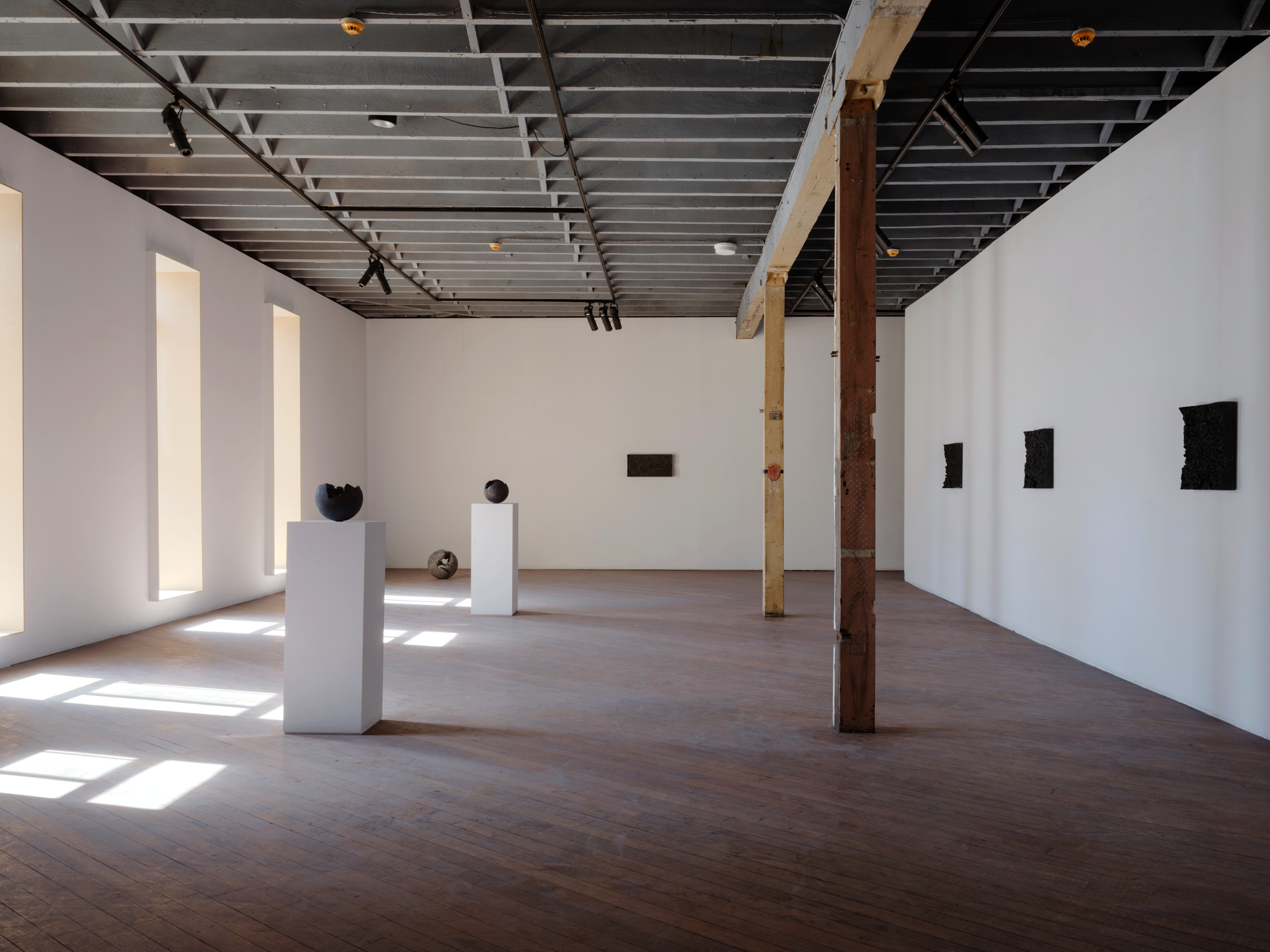Kien Situ
HOLOCENE
4 – 27 April 2025
HOLOCENE
4 – 27 April 2025
Works
Installation views
Press release
Nasha gallery is pleased to present HOLOCENE 2025, Kien Situ’s first solo exhibition with the gallery.
The term HOLOCENE (pron. ‘hollow-scene’) designates our current geologic epoch since the end of the last major glacial period - one marked profoundly by human presence yet overshadowed by deeper geological time. This exhibition examines looming convergence points of constructed civilisation and planetary erosion - emphasising the inherent instability of form, space and environment, foregrounding materials and methodologies emblematic of both ruin and resilience.
This new body of work presents as a continuation of the artist’s research into dislocated material narratives, furthering the development of an invented composite he terms ‘multi-dimensional matter’. Still central to his practice is his interrogation of Chinese Mo Ink, whose Chinese character (墨) is composed of the Chinese characters for black (黑) and earth (土) - due to the elemental and subterranean origins of the dusky materials used in its production.
Fusing geological elements of shared subterranean origins spanning ancient, modern, futuristic and spiritual realms, he posits new temporal, spatial and relational dimensions as these elements converge in harmonic tension. The resultant synthesis forms a singular material entity, unifying Chinese Mò ink, (2D, ancient), gypsum/concrete (3D, modern), titanium (4D, futuristic) and the artist’s and a community temple’s incense ash (5D, spiritual) with ‘reincarnatedm fragments of old artworks, embodying a ruptured and multi-faceted accumulation of time across epochs and environments.
Central to the exhibition are a new series of work that have sprung from the artist’s recent contribution the Venice Architecture Biennale 2025: Intelligens for HOME at the Australian Pavilion. Shanshui (Prophecy) appears as a ruptured and inverted spherical landscape, reimagining a planetary form into an interior terrain — ruptured, displaced, and fragmented. It is both prophecy and reflection, a vision of the past refracted into an uncertain future. The familiar dissolves into the unfamiliar, echoing the cultural displacements, ecological degradation and civilisational upheaval shaping our contemporary world.
The interior space of the artwork is destabilized, resembling a fractured sphere with a bent, interior gravity transgressing the gravitational laws of nature - an inversion of natural order at the cost of progress. As the terrain fractures, it becomes a multidimensional landscape, a murky black mirror as the surface upon which Venice sits, reflecting the psychological and spiritual dissonance of a universal condition.
Echoing the hyper-granular variations in multicultural lived experiences of displaced peoples globally and in Australia, this artwork is able to adopt myriad personalities as it is rotated and placed at different angles.
Shanshui (Prophecy) is not only a meditation on fracture but a proposition for new material futures — where past and future, destruction and renewal, are held in simultaneous tension. It challenges the stability of landscape and identity itself, transforming it into a site of dislocation, inversion, and potentiality.
